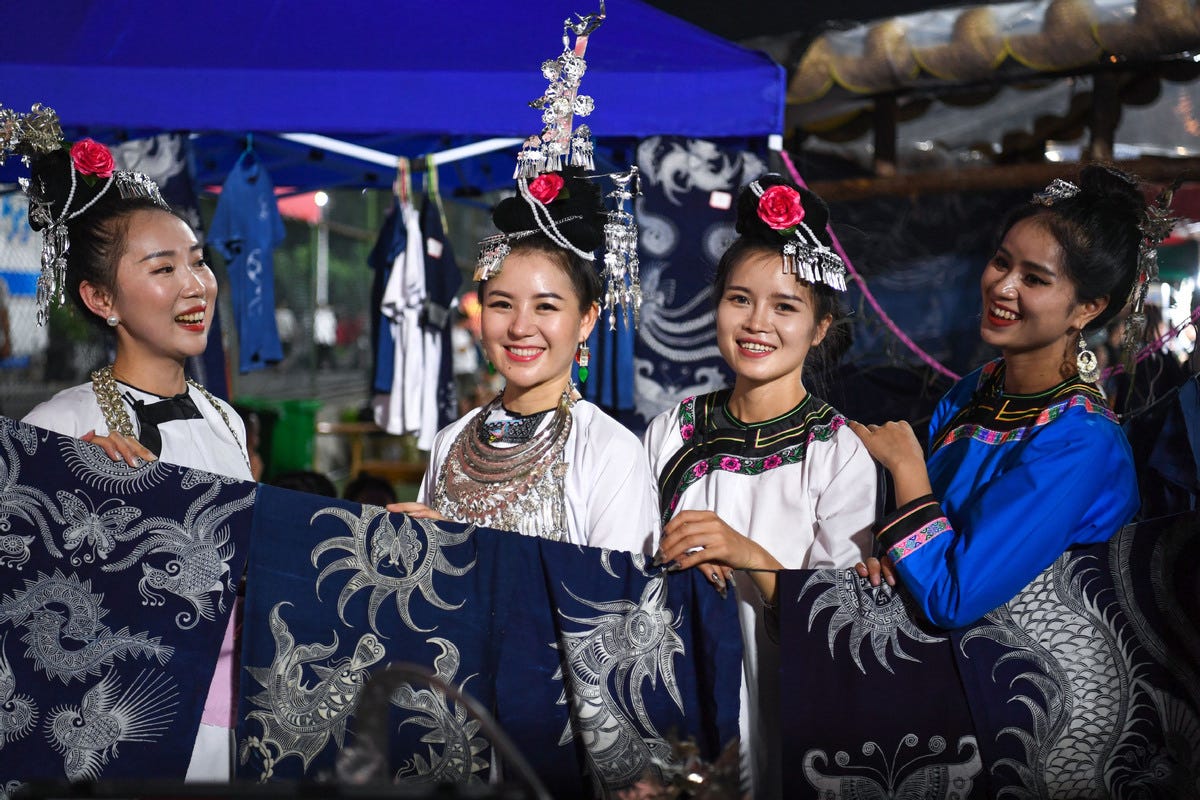Sport and Rural Revival: The Village Super League (VSL)
How a Grassroots Football League is Shaping China’s Rural Revitalisation Efforts
This week's edition of The Harvest introduced the Village Super League (VSL). This grassroots football phenomenon has captured national attention since its debut in Rongjiang County, Guizhou Province, in May 2023. Selected as this week’s feature, we delve deeper into the VSL’s transformative impact and broader implications for rural China.
Though it began in Guizhou, the VSL's influence has quickly spread to other regions, inspiring similar initiatives that blend sports, cultural preservation, and local economic development. This growing trend is part of a larger movement in rural revitalisation, where football serves not only as a game but also as a catalyst for community empowerment and the assertion of cultural identity. The VSL's ambitions now extend beyond China's borders, with high-profile collaborations featuring football stars like Kaka and Fabio Cannavaro, as well as proposals for a "Village Super League World Cup." These global outreach efforts align with China's Belt and Road Initiative (BRI), positioning rural areas as key players in international exchanges.
However, beneath the VSL's surface success, it also raises complex questions about cultural representation and commodification. It prompts an examination of how rural China is portrayed domestically and globally and how these portrayals—shaped by a combination of grassroots enthusiasm and state-driven forces—influence the broader development narrative.
A Grassroots Phenomenon or a State-Driven Strategy?
The Village Super League has rapidly evolved from a local sporting event into a cultural and economic catalyst, sparking a national conversation about rural revitalisation. State media coverage paints the VSL as a powerful example of how grassroots initiatives can align with and promote national goals. The league has driven economic growth, with tourism revenue in Rongjiang surging by over 50% year-on-year in 2023 and attracting more than 420,000 visitors.
The VSL's appeal is multifaceted. It integrates local ethnic cultures, heritage, and traditional foods into a broader economic framework. State media has highlighted how the event boosts local businesses, from food stalls to local artisans, while promoting agricultural products during the festivities.
These efforts mirror China's broader rural revitalisation strategies, which aim to modernise rural economies while preserving cultural identities. Rongjiang's VSL, then, is not just a football competition but a carefully orchestrated initiative that ties local pride and cultural heritage to broader national economic development objectives.
However, this alignment with state goals raises questions about the authenticity of the VSL as a genuinely grassroots movement. While it is presented as a celebration of local traditions and community spirit, its deep integration with national policy, supported by government funding and infrastructure, suggests that the event is part of a larger state-driven strategy. The portrayal of ethnic pride and cultural heritage in the VSL, though widely celebrated, may be seen as a carefully curated narrative designed not just to uplift rural communities but to reinforce the political and economic frameworks set out by the central government.
In this light, the VSL exemplifies the delicate balance between state-directed cultural commodification and the portrayal of rural China as a vibrant, self-sustaining community. Whether seen as a grassroots phenomenon or a state-driven strategy, the league's success raises important questions about modern rural China's intersections of culture, economy, and governance.
Cultural Preservation versus Commercialisation
The commodification of culture, particularly in the context of rural revitalisation, brings us to a central theme of our broader exploration of rural China: the tension between cultural preservation and commercialisation. This dynamic mirrors the broader patterns of marginalisation and commodification seen in tourism, which we explored in our first feature post on Self-Orientalism in Rural China. As discussed in that piece, rural communities are frequently portrayed in simplified, exoticised ways for commercial gain, with their true complexity and local agency obscured. This dynamic is an ever-present element of the Chinese government's rural revitalisation agenda, which frequently shapes representations of rural life to fit external consumption preferences rather than fostering genuine local expression.
This idea becomes crucial when examining the VSL in Rongjiang County, where cultural practices like Miao embroidery and local cuisine have been commodified for external consumption. While these shifts offer economic opportunities for rural communities, particularly women, they risk diminishing the cultural significance of these traditions. Once a deep and personal craft, Miao embroidery is now marketed as football merchandising, raising important questions about preserving authenticity in the face of economic incentives.
In the case of the VSL, women's economic empowerment through craft production might contribute to their participation in an increasingly commercialised supply chain that benefits urban elites and international consumers. These urban stakeholders often reap most of the profits, leaving rural artisans with limited financial gain. This power imbalance echoes Said's argument about the dynamics of cultural representation, where the state and urban elites control what is deemed "authentic" and "valuable." In this context, the cultural practices promoted by the VSL, like Miao embroidery, may be redefined not for their intrinsic cultural worth but as consumable products tailored for external markets.
The VSL's role in showcasing Miao culture to global audiences also risks perpetuating a form of self-orientalism. As colonial powers historically represented the "Other" as exotic and timeless, the VSL portrays rural cultures as quaint, static, and culturally distinct. This reinforces national pride and enhances rural China's appeal to international tourists and consumers. However, this representation risks distorting the lived realities of rural communities, turning vibrant, evolving traditions into commodities. The simplified narrative of ethnic pride and cultural heritage, carefully packaged for consumption, obscures the diversity and complexity of rural life, ultimately reinforcing a false version of rural China.
Impact on Local Communities
The economic transformation sparked by the Village Super League (VSL) has brought tangible benefits to communities like Tehe. The rise in tourism, driven by the VSL, has led to increased revenue across local businesses, including restaurants, lodging, and retail outlets. This has provided new economic opportunities, improving living standards for many in Tehe and surrounding areas.
However, while these positive changes are undeniable, they do not come without their challenges. The economic uplift is not evenly spread, and wealthier urban stakeholders often benefit disproportionately. The most lucrative parts of the tourism and craft sectors are frequently controlled by urban elites, with the profits from tourism-driven growth often concentrated in the hands of those who control the supply chains. This uneven distribution of wealth reinforces the disparities between urban and rural areas, highlighting the limitations of relying solely on tourism as a means of revitalisation.
Despite these concerns, the VSL's success underscores an important point: rural communities can harness external interest to drive economic growth, but this must be done in a way that ensures long-term, equitable benefits. Tourism and cultural preservation can be powerful tools for local empowerment, as seen in the growing participation of rural women in the handicraft market. The challenge, however, is whether this economic boon can translate into sustainable development that addresses more profound inequalities. Diversifying economic strategies and promoting local agency are crucial steps towards ensuring that the benefits of these initiatives are more widely distributed.
Additionally, the volatility of tourism as an economic driver remains a concern. While the tourism sector has flourished in recent years, external factors such as the COVID-19 pandemic or travel trends can quickly undermine tourism's prosperity. In this respect, the VSL offers a valuable lesson: while it has proven to be a significant catalyst for rural revitalisation, the dependency on a single sector—especially one that is so sensitive to external pressures—poses risks to the long-term stability of rural economies.
The real challenge moving forward will be to ensure that the VSL's success can be sustained. Rural revitalisation should not solely rely on commercialising culture; instead, it should build resilience and foster more inclusive, locally driven development. By diversifying economic opportunities and addressing the underlying structural inequalities, rural China can unlock its full potential without falling victim to the volatility of tourism-dependent economies.







